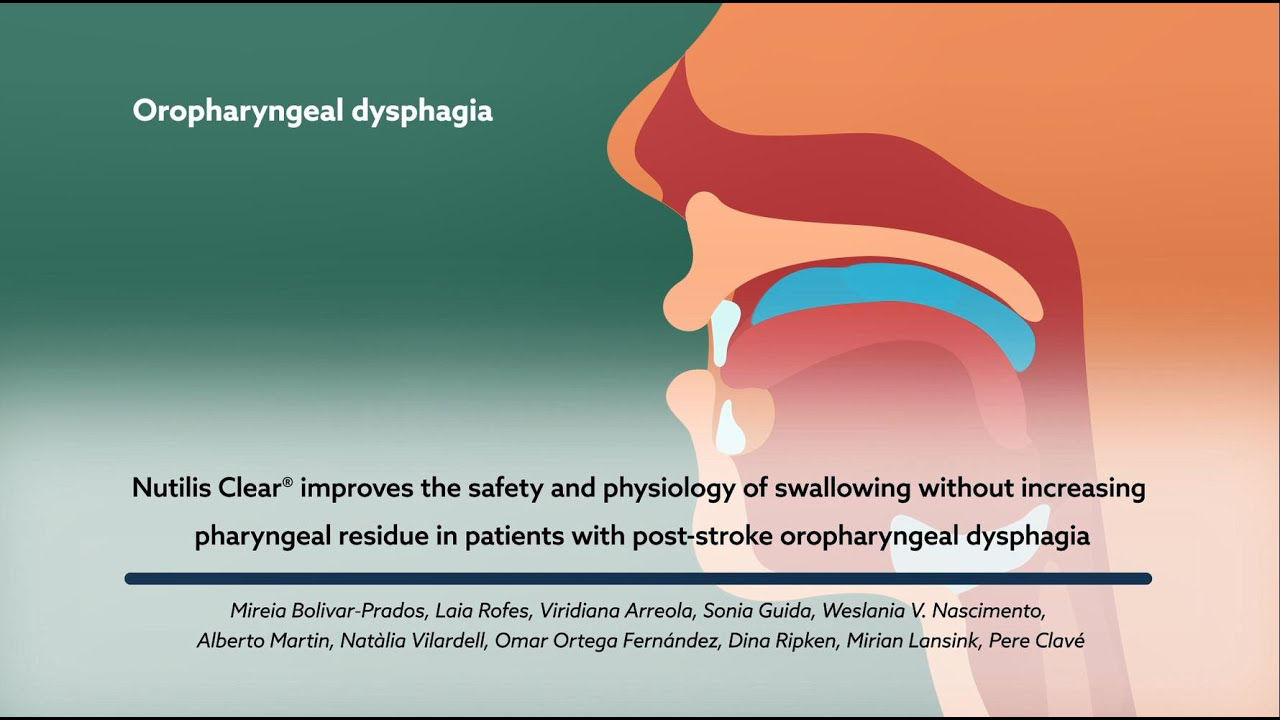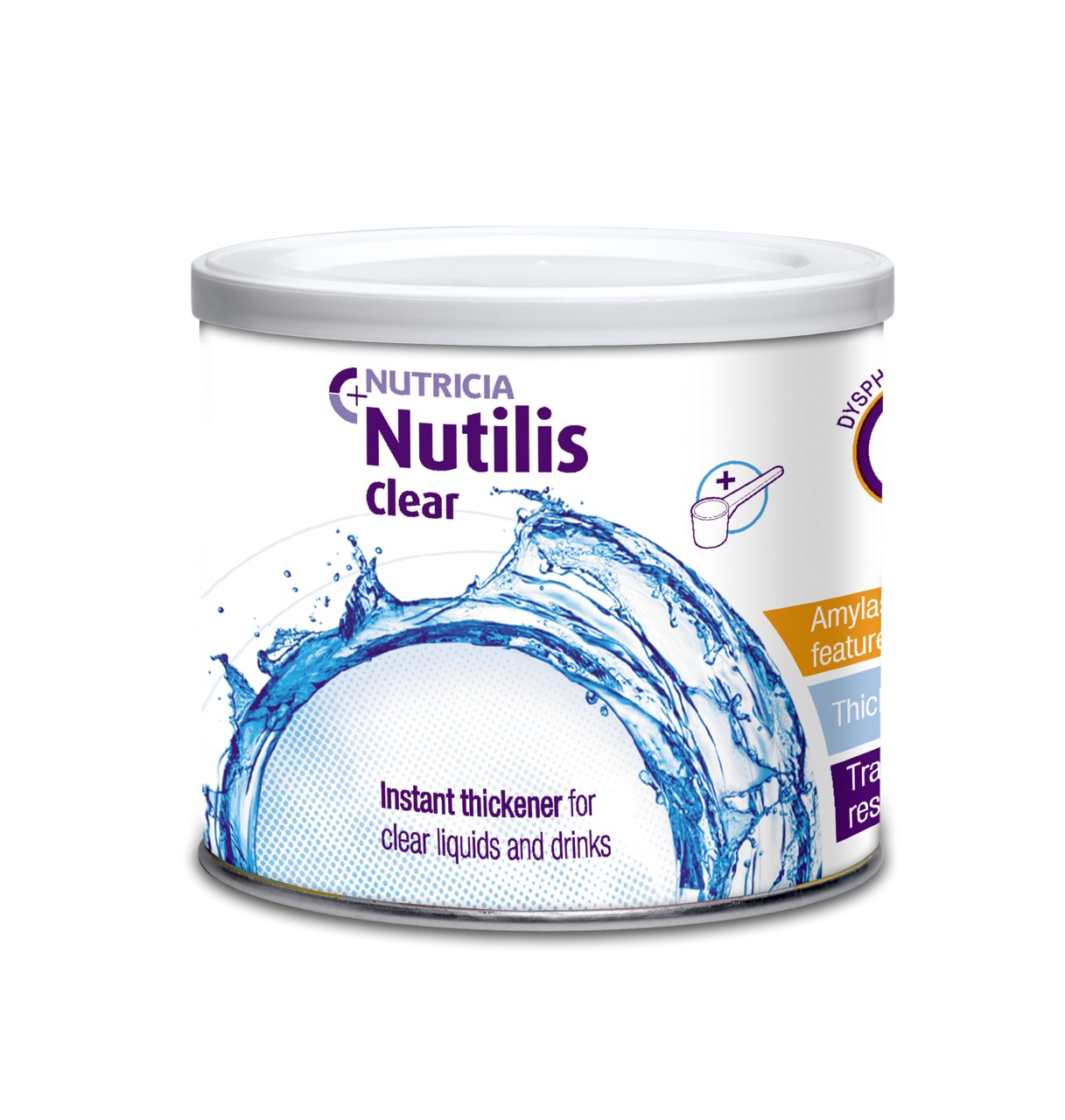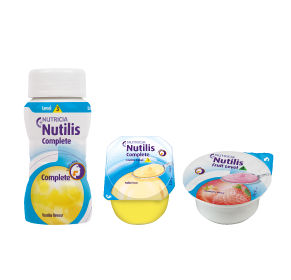Impact of Nutilis Clear on safe swallowing
The Triple S study, published in the Journal of Neurogastroenterology & Motility, shows that a specific xanthan gum-based thickener increased the safety of swallow over a wide range of viscosities in patients with post-stroke oropharyngeal dysphagia (PSOD), without increasing pharyngeal residue. The thickener also improved the physiology of swallowing.1
Post stroke dysphagia increases mortality
Stroke is the second leading cause of death and the third leading cause of disability worldwide.2,3 An independent risk factor for increased mortality after stroke is oropharyngeal dysphagia (OD)1. OD is defined as a swallowing difficulty affecting the transport of foods and liquids from the mouth to the esophagus. OD is characterized by impaired swallowing mechanisms including safety, efficacy and physiology of swallowing and is associated with malnutrition, dehydration and respiratory infections.4
PSOD is a common complication following stroke, with an incidence up to 78% in acute stroke patients5. It was recently also found to be a risk factor for prolonged hospital stay and a decreased functional capacity.1

Use of thickeners
The European Society for Swallowing Disorders (ESSD) states that increasing the viscosity of liquids with thickening agents can enhance the safety of swallowing by reducing the risk of airway invasion6. Most studies on thickening agents only tested a few viscosity levels per study, and the optimal viscosity levels for patients suffering PSOD have not been determined yet.
Triple S study
The Triple S study evaluated the effect of Nutilis Clear in 120 patients with PSOD. The effect of the thickener was tested on safety, efficacy (e.g. presence of pharyngeal residue) and physiology of swallowing (e.g. time to laryngeal vestibule closure (LVC)). The LVC is a protective mechanism which ensures that the airways are not accessible by the food or liquid bolus during the swallowing process.
The study was conducted by evaluating 10 mL boluses of 150, 250, 450, 800, 1400, and 2000 mPa.s in comparison to unthickened (thin) liquid. Swallowing mechanisms were evaluated with videofluoroscopy (VFSS) and Penetration Aspiration Scale (PAS).
Why is the Triple S study unique?
The Triple S study is the first study designed to evaluate the effect of 7 different viscosities in PSOD patients. Access the full study here.
Key results of the study
Study results demonstrated:

• 92.1% of patients could swallow safely at 800 mPa·s
• The therapeutic needs of these patients can be covered with a viscosity range of 150 –800 mPa·s

• This is in contrast to modified starch thickeners, which have been shown to increase pharyngeal residue with increased bolus viscosity1,7,8

• The time to LVC by the epiglottis is crucial and is the first line of defense that prevents food and liquids from entering the airways9
• For the first time, it is shown that a xanthan gum-based thickener significantly reduced time to LVC at all tested viscosities (p<0.01)
These results confirm the effectiveness of Nutilis Clear and support the recommendation of use in the management of oropharyngeal dysphagia.
Prof. Pere Clavé discusses and shares his conclusion from the Triple S study in his session on the “Safety of swallowing in post-stroke oropharyngeal dysphagia: does viscosity matter?”.
Do you need support?
Contact our team of experts for guidance on the use and composition of our product range, for support with queries regarding your Nutricia account and sampling service or to get in touch with your local Nutricia representative. We are available Monday to Friday 9am-5pm (except Bank Holidays)
- Rofes, L, Muriana, D, Palomeras, E, et al. Prevalence, risk factors and complications of oropharyngeal dysphagia in stroke patients: A cohort study. Neurogastroenterology Motil. 2018; 30:e13338
- World Health Organization (2018). The top 10 causes of death. Retrieved on May 9th 2019 from: https://www.who.int/news-room/fact-sheets/detail/the-top-10-causes-of-death.
- Global Health Estimates. Geneva: World Health Organization; 2012. Available from: http://www.who.int/healthinfo/global_burden_disease/en/ [cited 2016 June 1].
- Clave & Shaker. (2015). Dysphagia: current reality and scope of the problem. Nature Reviews Gastroenterology & Hepatology 12, 259-270.
- Martino R , Foley N , Bhogal S , et al . Dysphagia after stroke: incidence, diagnosis, and pulmonary complications. Stroke 2005;36:2756–63.doi:10.1161/01.STR.0000190056.76543.eb.
- Newman R., Vilardell N., Clave P., Speyer R. Effect of Bolus Viscosity on the Safety and Efficacy of Swallowing and the Kinematics of the Swallow Response in Patients with Oropharyngeal Dysphagia: White Paper by the European Society for Swallowing Disorders (ESSD). Dysphagia. 2016; 31:232-249.
- Clave P et al. Aliment PharmacolTher. 2006;24:1385–94.
- Vilardell N., et al. Comparative Study Between Modified Starch and Xanthan Gum Thickeners in Post-Stroke Oropharyngeal Dysphagia. Dysphagia, 2015; 31(2), 169-179.
- Garcia JM, Chambers E 4th. Managing dysphagia through diet modifications. Am J Nurs. 2010;110(11):26-33. 2. Vilardell N. et al. Neurogastroenterology & Motility. 2017;29:e13111.
You may also be interested in
Nutricia offers access to a wide range of support services and resources including:
- • Our free Sampling Service to order product samples and have them sent to your patients' homes.
- • A range of CPD accredited e-learning programmes.
- • Order free paper copies of our support tools for yourself or to use with your patients.
- • Sign up to receiving marketing communications and be the first to know about our free educational events & webinars, the latest scientific research and product updates.
Help us provide information most relevant to you
Please ensure your role and areas of interest are up to date.





